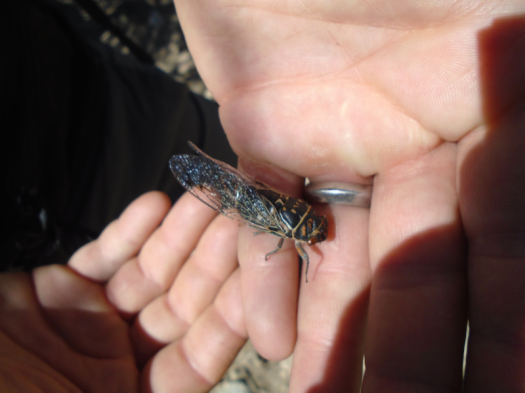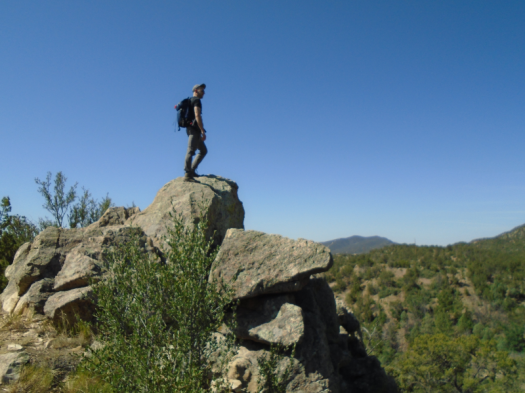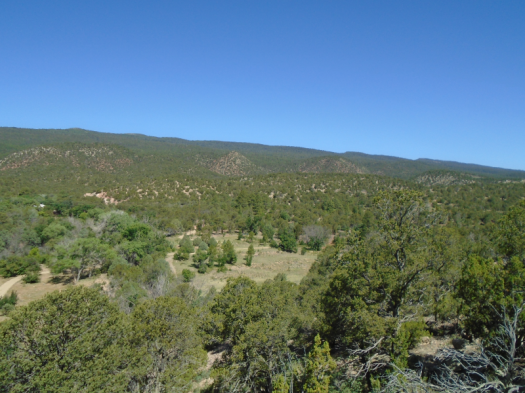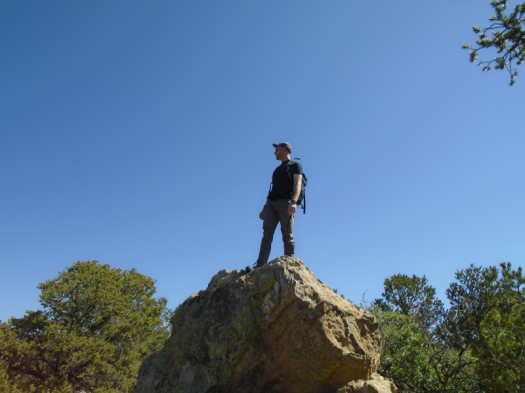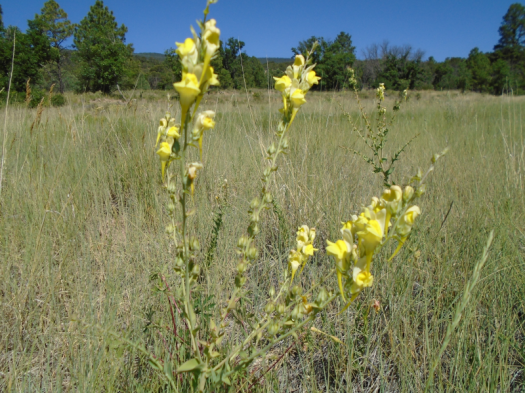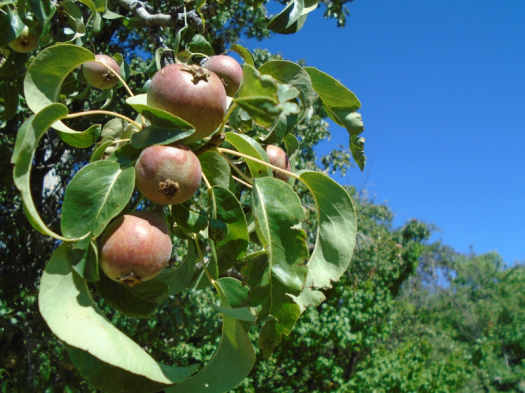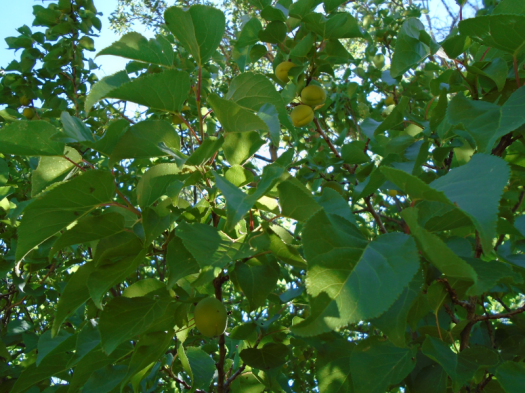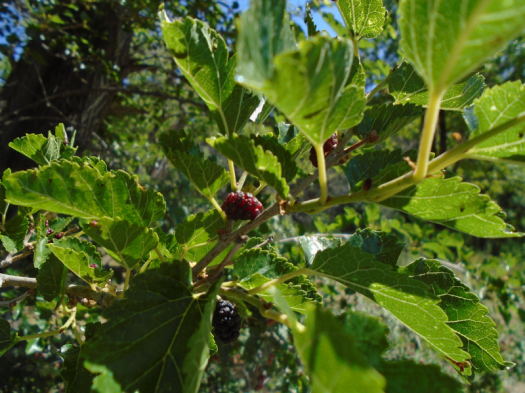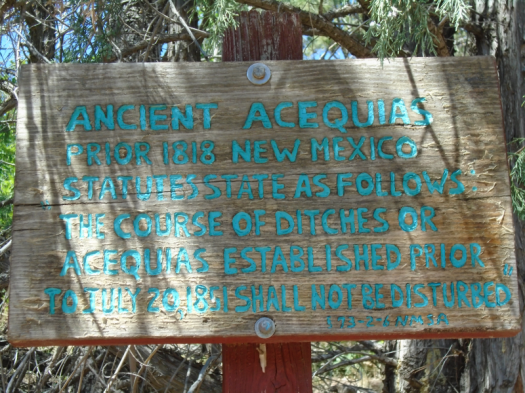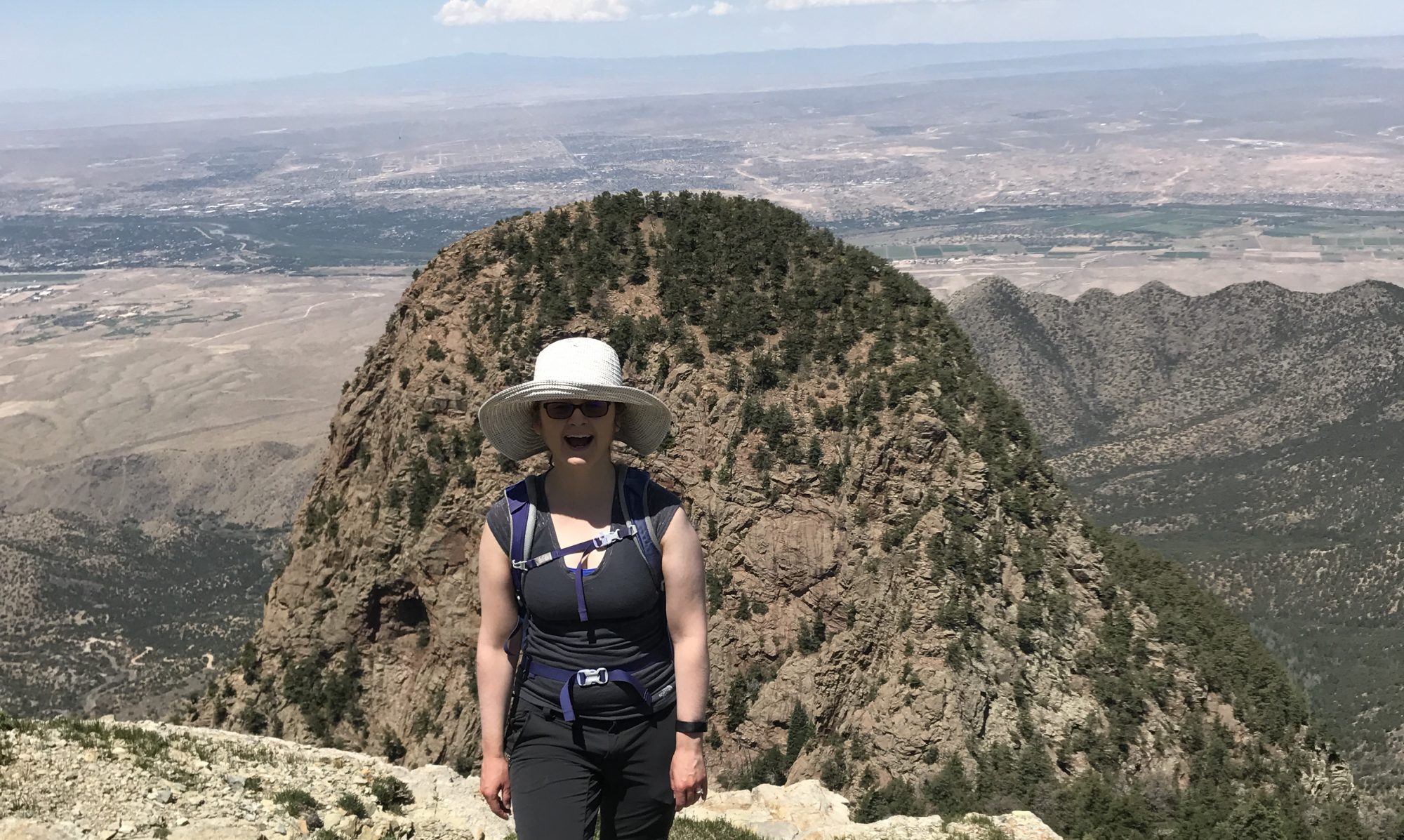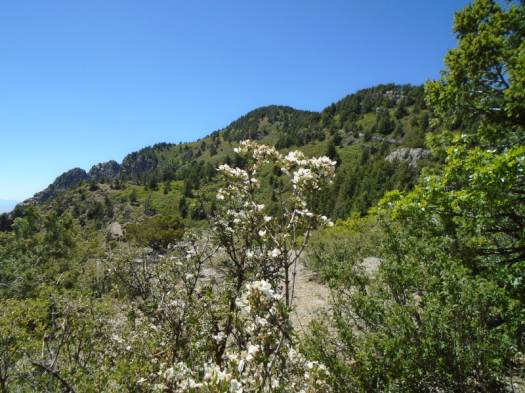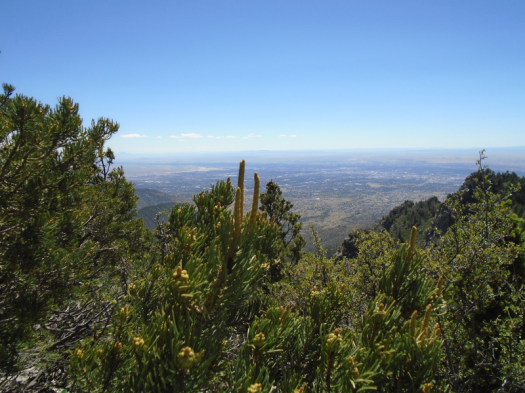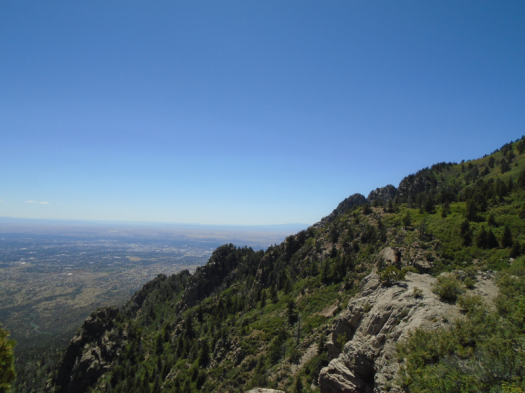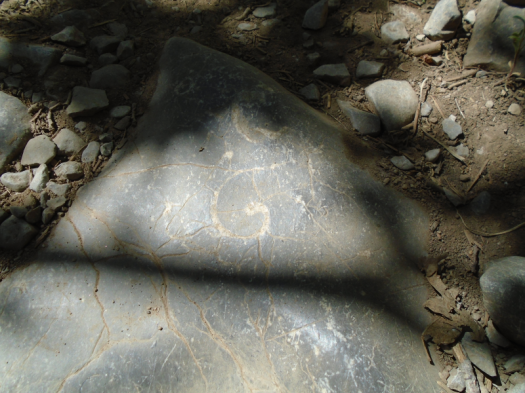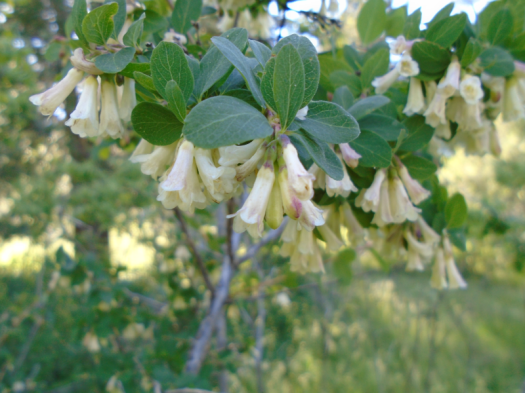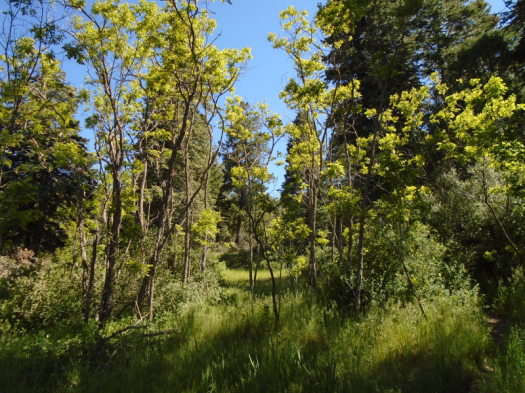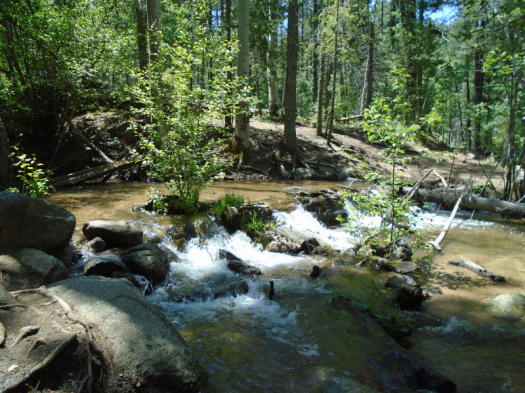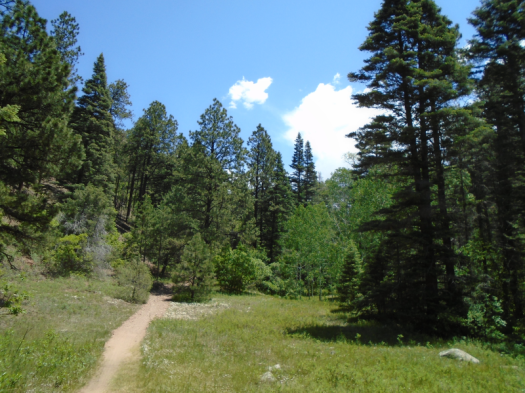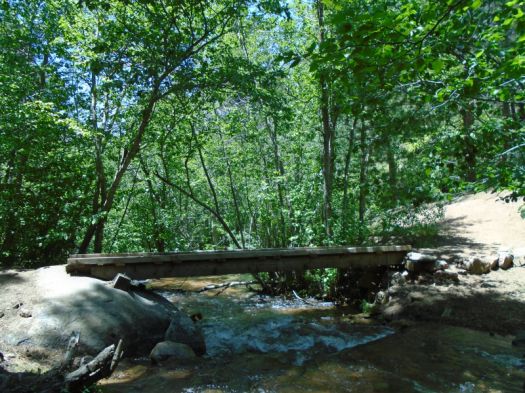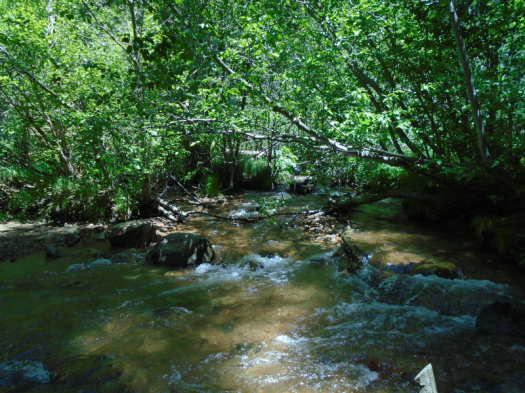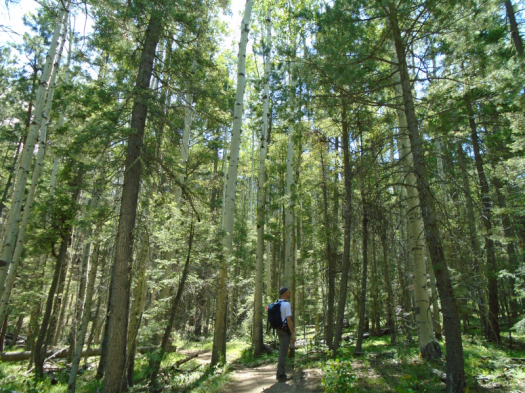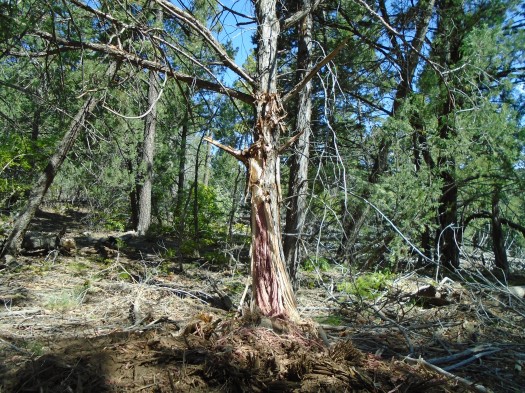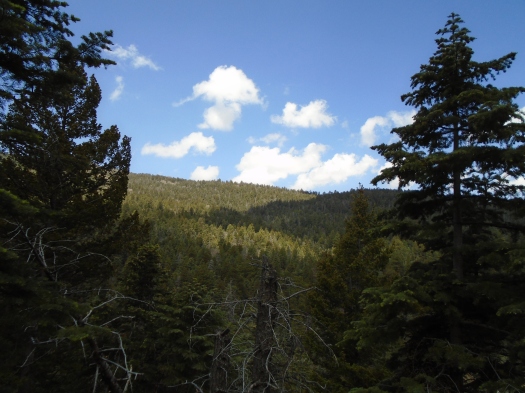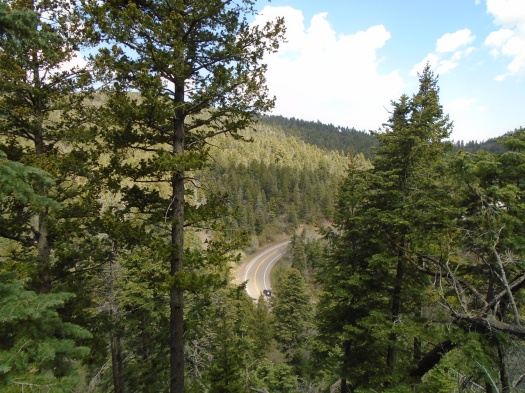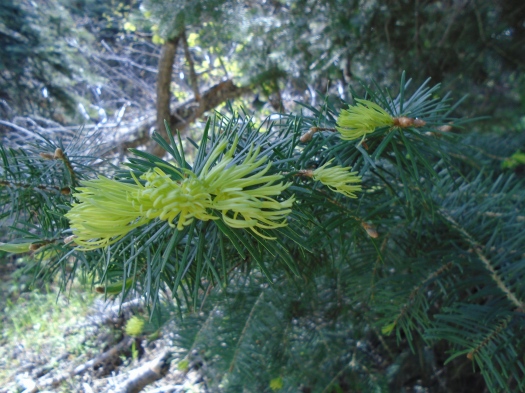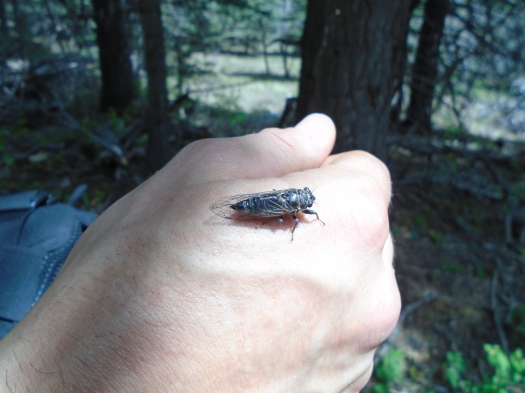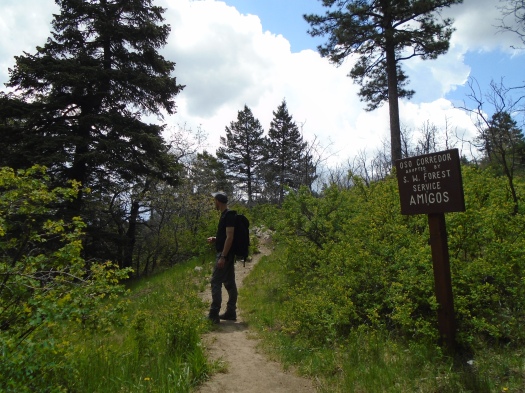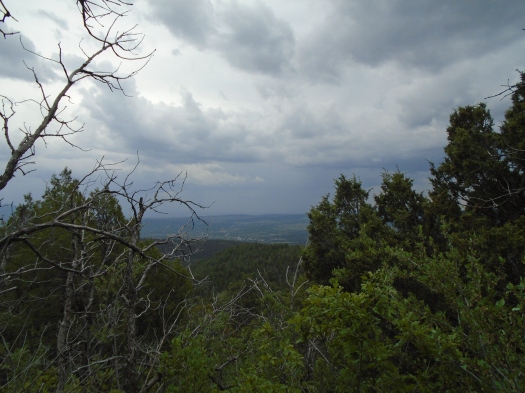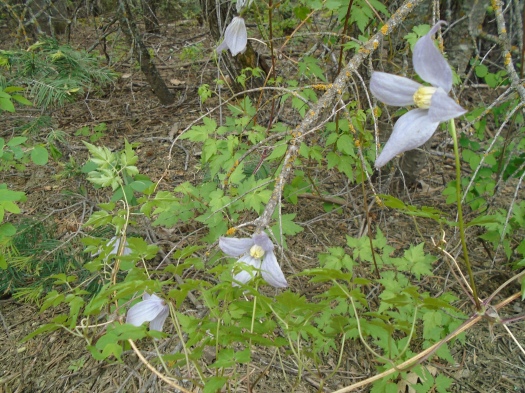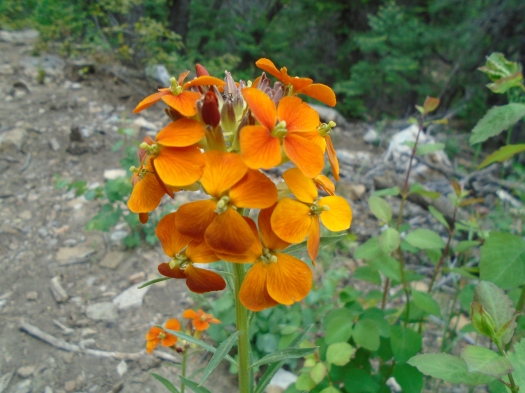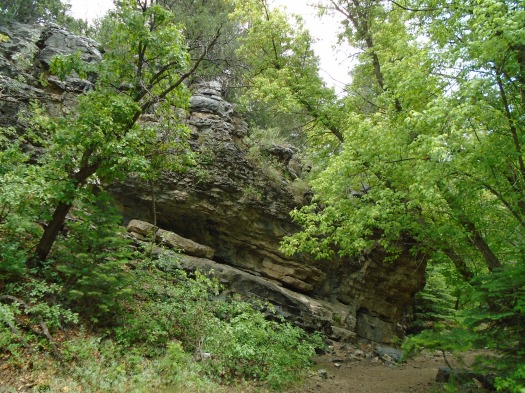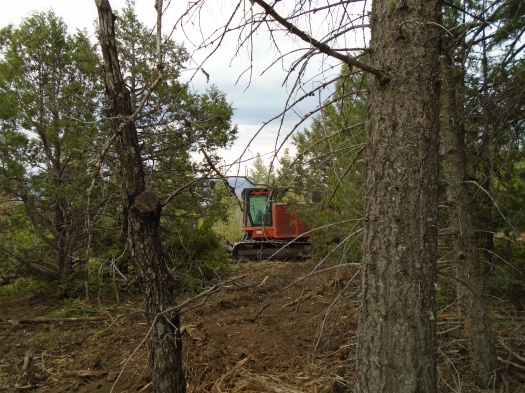I. Capulin Peak
We step onto the overlook and into a bird ballet.
Vultures and hawks soar above us, riding the cool breeze that whips at the overlook.
The Estancia Valley rolls away to the east. Veins of red soil ripple the green plains between us and the San Pedro and Ortiz mountains.
We stare out at a giant obelisk, a Titanic of rock, pale cliffs rising from forested slopes.
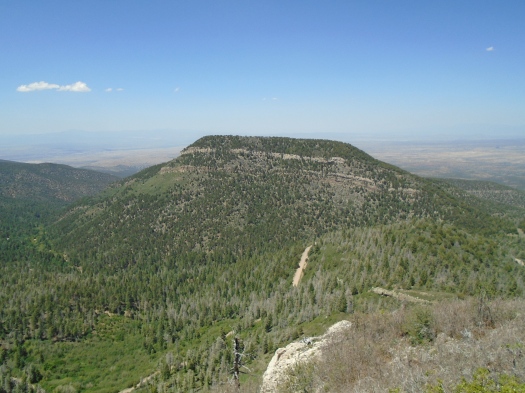
Between us and the obelisk, a wooded valley. A dirt road plunges into the valley, rolls around it, then climbs out the other side.
I want to go there, I think.
Then I realize that’s the place we already planned to go next.
II. Palomas Peak
My knees scream.
Something screams louder.
“Is that a mountain screamer?” I ask my husband, trying to make light of the sound. I’d learned from a dialect quiz that in some places in the U.S., people call mountain lions “mountain screamers.”
He laughs.
Some kind of bird we can’t see is making the sound, an eerie one I’ve never heard, and it doesn’t let up. I wonder if it’s in distress, or distressing something else.
I wonder if it’s at the edge of its capabilities.
I’m pretty sure I am.
The Palomas Peak ridgeline twists and bumps along, tight against the bands of limestone we’d seen earlier.
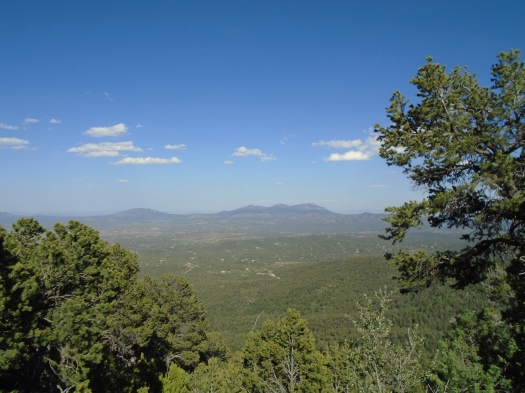
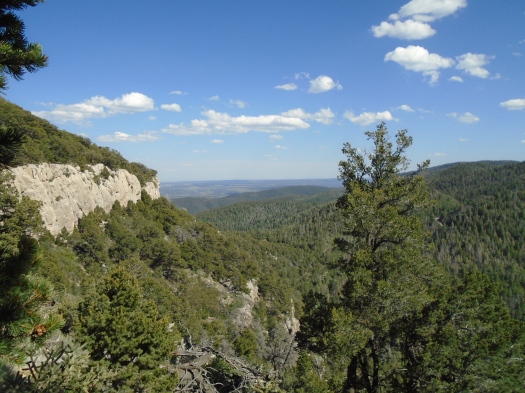
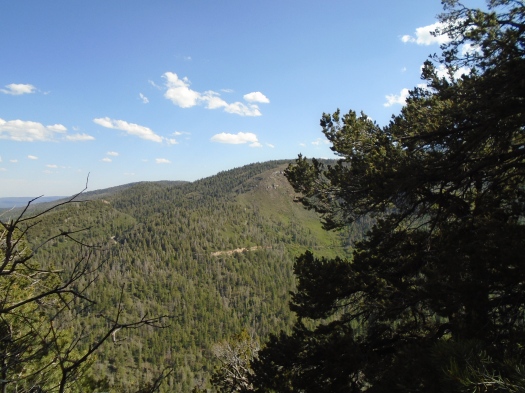
Splintered and fallen rock litters the trail. Just a couple of steps beyond us, the slope plunges into the canyon.
My husband spots climbing pitons in the rock wall above us. I don’t see any of them. I’m mostly watching my feet.
But from our spot near the ridgeline’s end, we can look back at the cliffs we just walked under, the endless green ridges.
We navigate the rugged ridgeline back to the steep trail that brought us here.
At a junction, we visit Lagunita Seca meadow, which we bypassed on the way up.
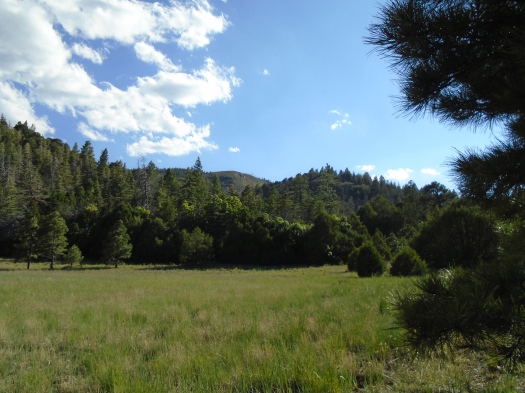
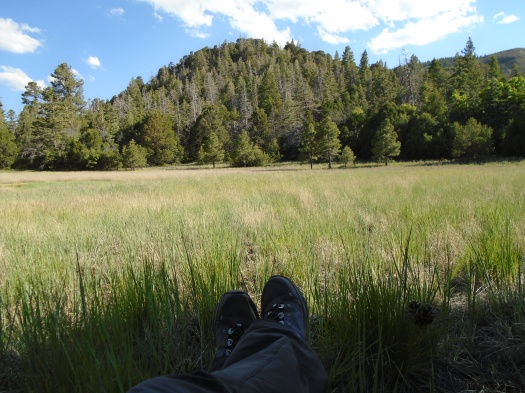
We sit under a tree, eat a snack and look out at all the shades of green.
We head back to our car on a path that’s nearly swallowed by waist-high grass and wild rose and head-high Gambel oak.
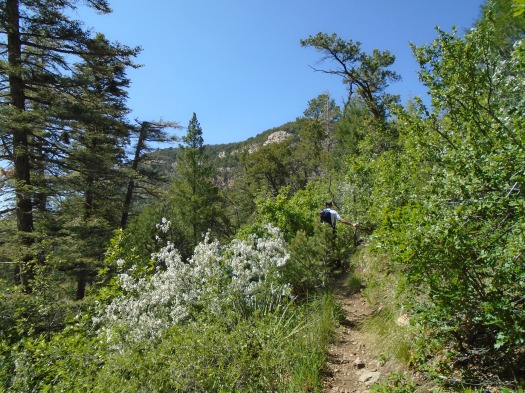
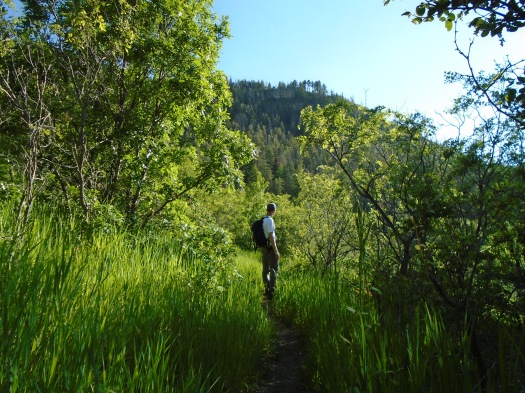
Palomas Peak’s rock bands and evergreens, now high above us again, peek through the growth.
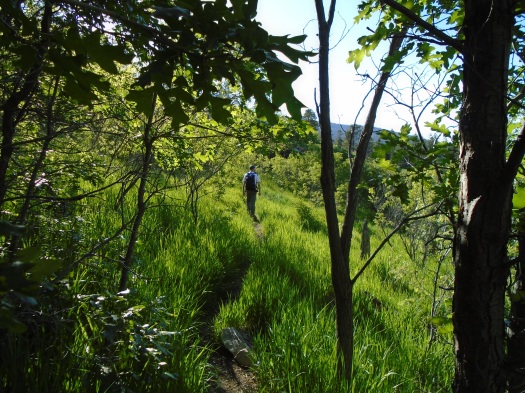
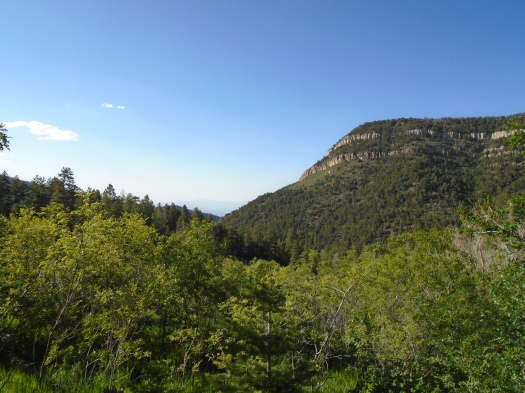
We saw many things on the Palomas Peak Trail. They did not include footprints. It’s the wildest place we’ve seen in five years of hiking the Sandias.
Hike length: Capulin Peak Trail 1.6 miles, Palomas Peak Trail 2.5+ miles
Difficulty: Capulin Peak Trail – easy; Palomas Peak Trail – moderate (the ridgeline is strenuous)
Wildlife spotted/heard: grasshoppers, cicadas, crows, vultures, hawks, jays, butterflies
Trail traffic: none on either trail
Things to know:
-Palomas Peak Trail is unmaintained; the ridgeline is rough, as noted above; and about a quarter mile from the trailhead, multiple partially fallen dead trees present a serious hazard. Hike at your own risk.
-I’ll save you a half-hour of wandering around parking lots and roads by telling you that Capulin Peak Trail begins at the snow play area, not the picnic area.
-Capulin Peak Trail would be an outstanding hike for small children, but keep them very close at the end of the trail. The dropoffs from the overlook are steep.
-The dirt valley road noted above is Highway 165 West to Placitas. It is stunning, especially this summer with the creek running. If you have a truck, take it. If you don’t have a truck, you can still drive this road, but take it very slowly.
-Both of these hikes are from the Sandia Mountain Hiking Guide.
